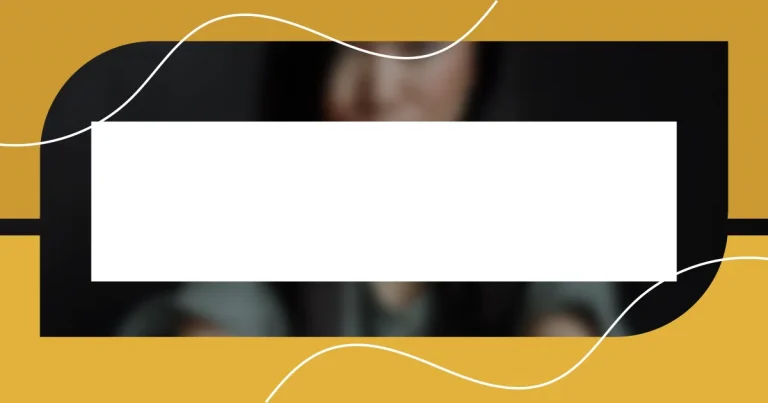Key takeaways:
- Lighting and composition are essential for impactful portraits, as they enhance subject engagement and emotional connection.
- Editing techniques such as retouching, color grading, and lighting adjustments refine portraits, bringing out details and mood while preserving authenticity.
- Finalizing edits involves reassessing composition for clarity, ensuring a cohesive style, and seeking feedback to elevate the quality of the work.

Understanding Portrait Photography Basics
Understanding the basics of portrait photography goes beyond just pointing the camera at someone and clicking. When I first dabbled in this art, I realized that lighting is crucial. Have you ever noticed how the right light can transform a simple expression into something breathtaking?
Composition also plays a significant role. I remember my early days, struggling to frame a subject in a way that felt both inviting and powerful. It took some practice, but I discovered that positioning my subject off-center often led to more dynamic photographs. How do you frame your portraits for impact?
Lastly, capturing emotion is at the heart of effective portrait photography. When I photograph a subject, I try to connect with them, engaging in conversation to bring out their true self. This approach has taught me that a genuine smile or a moment of thoughtfulness can elevate an image from ordinary to extraordinary. What emotions do you seek to capture in your portraits?

Importance of Editing in Portraits
Editing plays a vital role in turning a good portrait into a stunning one. I’ve experienced firsthand how a slight adjustment in brightness or contrast can enhance a subject’s features, making them more engaging. It’s like the final brushstroke on a painting, refining the artistry and intention behind the shot.
Here are some key reasons why editing is essential in portraits:
- Enhancement of Details: Editing can sharpen facial features, bringing out the intricate details that might not be visible in the original shot.
- Mood and Atmosphere: Adjusting color tones can evoke specific feelings. For instance, a warm tone often creates a welcoming atmosphere, while cooler tones can set a more introspective mood.
- Consistency: A strong editing style ensures that your portfolio feels cohesive. It’s important to establish a signature look that viewers can recognize.
- Corrective Measures: Sometimes, things don’t go as planned in-camera. Editing allows me to fix unwanted distractions, like blemishes or stray hairs, ensuring the focus remains truly on the subject.
- Creative Expression: Editing offers an opportunity to infuse personal style. I enjoy experimenting with different edits that reflect my vision for each portrait, making the final image a unique expression of the moment captured.

Common Editing Techniques for Portraits
When it comes to editing portrait photographs, several techniques stand out to me. One of the most common methods is retouching, which involves smoothing skin tones and removing blemishes to create a polished look. I often find that a subtle touch on skin can enhance the overall feel without losing the subject’s authenticity. Have you ever noticed how over-editing can lead to an unnatural appearance? I’ve been there, and it taught me the importance of restraint.
Color grading is another powerful technique that can dramatically alter a portrait’s mood. By adjusting color balance and saturation, I can evoke emotions that resonate with viewers. For instance, I once edited a portrait with a warm, golden tone that perfectly captured the subject’s joyful expression. They remarked that the image felt like a slice of nostalgia; it turned out to be one of their favorites.
Lighting adjustments are indispensable in portrait editing. Playful highlights and shadows can add depth, drawing attention where it’s needed. I remember one particular shoot where the natural light was soft, but in editing, I bumped up the contrast just a notch. The result made the subject’s features pop in a way that was both striking and true to their essence.
| Editing Technique | Description |
|---|---|
| Retouching | Smoothing skin tones and removing blemishes for a polished look. |
| Color Grading | Adjusting color balance to evoke specific emotions associated with the image. |
| Lighting Adjustments | Enhancing highlights and shadows to add depth and focus to the subject. |

Enhancing Skin Tone and Texture
When I’m editing skin tones and textures, I often aim for a balance that feels both natural and polished. One approach I find effective is using frequency separation. This technique allows me to work on the skin tone independently from the texture, smoothing out blemishes without sacrificing the natural contours of the face. Have you ever looked at a portrait and felt it was too smooth, almost plastic? I once made that mistake and learned the hard way that a little texture goes a long way in preserving the subject’s uniqueness.
Color correction is another vital aspect I pay close attention to. Adjusting the warmth or coolness of skin tones can dramatically influence the image’s mood. For example, I remember editing a portrait of a friend taken at sunset; the warmth of the light was beautiful, but I had to carefully enhance the skin tones to eliminate any unwanted orange cast. The result was a lovely, natural glow that not only complemented her features but also mirrored the joy of that moment. Isn’t it amazing how a simple color tweak can elevate a photograph?
I also love exploring the use of soft focus effects around the edges of the skin. It adds a dreamy quality that captivates the viewer while guiding focus to the eyes, which are often the most expressive part of a portrait. There’s a particular portrait I worked on where I applied a gentle soft focus; the subject’s eyes sparkled, and it gave a depth that truly drew people in. I often ask myself: how can I create that emotional connection with every edit? It’s about transforming an image into a story that resonates with the viewer.

Balancing Light and Shadow Effects
Balancing light and shadow in portrait photography is an art form. I always experiment with different sources of light, whether it be natural or artificial, to find the sweet spot that enhances my subject’s features. Once, during a late afternoon shoot, I positioned my subject so that the golden hour light wrapped around them, creating gentle shadows that added dimension rather than overpowering them. Do you ever question how shadows can contribute to the mood of a photograph? I’ve discovered that when used thoughtfully, shadows can tell a powerful story.
In my experience, the interplay of highlights and shadows can evoke emotions that resonate deeply with viewers. I remember editing a portrait where the strong contrast between the shadow on one side of the face and the light on the other conveyed a sense of mystery. It felt almost cinematic, prompting the viewer to ponder the subject’s thoughts. Have you felt that certain images pull you in because of their dramatic use of light and shadow? This involves not just technical skill but also an intuitive understanding of how these elements interact.
Moreover, I often revisit light and shadow during the editing phase to ensure a balanced composition. I tend to pay close attention to areas where shadows might obscure important features. When I finessed the lighting in a portrait where the subject’s eyes were slightly hidden, enhancing the light just enough to reveal more without losing that alluring shadow helped the image come to life. It’s fascinating how a little adjustment can bring forth emotions and spark connection—things that make portrait photography so captivating.

Creative Color Grading Methods
Color grading is where I find my creative spirit truly ignited. One method I adore is the use of split toning, where I can really play with hues in the highlights and shadows. By introducing warm tones in the highlights and cooler ones in the shadows, I create a captivating visual contrast that adds depth and mood to a portrait. Have you ever noticed how certain color combinations can evoke different feelings? I once edited a moody portrait where adding a soft lavender tone to the shadows transformed the overall ambiance, giving it a whimsical yet sophisticated feel that resonated with the viewer.
Another approach I find intriguing is using color blocks strategically within a portrait. By isolating specific elements—like a vibrant accessory or the background—I can create focus that draws the viewer into the core of the image. I remember editing a fashion portrait where I highlighted a bright red scarf against muted tones; it felt electric! The colors not only made the subject pop but also told a story of boldness and confidence. Can you visualize how a single color can shift the entire vibe of a photograph? That’s the magic of understanding color theory and applying it practically.
I also enjoy working with gradient mapping to experiment with mood. It’s fascinating how different gradients can evoke specific emotions. Once, I took a serene portrait and applied a soft pastel gradient, instantly transforming the image into something dreamlike. It almost felt like the subject was floating in a moment of reflection. Have you ever found that a color scheme can transport you to a different emotional space? That’s the kind of emotional journey I aim to create with my edits, bridging the gap between the photograph and the viewer’s heart.

Finalizing Your Portrait Edit
Finalizing your portrait edit isn’t just about polishing the details; it’s where I synthesize all the elements I’ve worked on throughout the process. I often take a step back and reassess the entire composition, ensuring that the story I want to convey is clear and impactful. Have you ever spent a good amount of time on an edit, only to realize a tiny tweak can make all the difference? I once overlooked the brightness of a subtle background element, and when I adjusted it, the portrait transformed, allowing the subject to truly shine.
When it comes to final touches, consistency in style is key for me. I believe that every portrait should evoke a cohesive vibe that reflects not only the subject but also my artistic vision. In one instance, I edited a series of family portraits and made sure the color grading across them felt uniform, which beautifully tied the series together. Have you ever felt that sense of harmony in a collection? It can really elevate the visual experience, making each portrait feel like a chapter in a captivating story.
I also find that seeking feedback can be invaluable at this stage. Sometimes, I’ll show my edits to a fellow photographer or even a trusted friend. The fresh perspective can reveal blind spots I might have missed. I remember sharing a portrait where I thought I’d hit the nail on the head, but a friend pointed out a distracting element I hadn’t noticed. As frustrating as it was at the moment, their insight ultimately improved the final outcome. Would you be open to sharing your work for feedback? It’s amazing how collaboration can enhance your artistic process.














